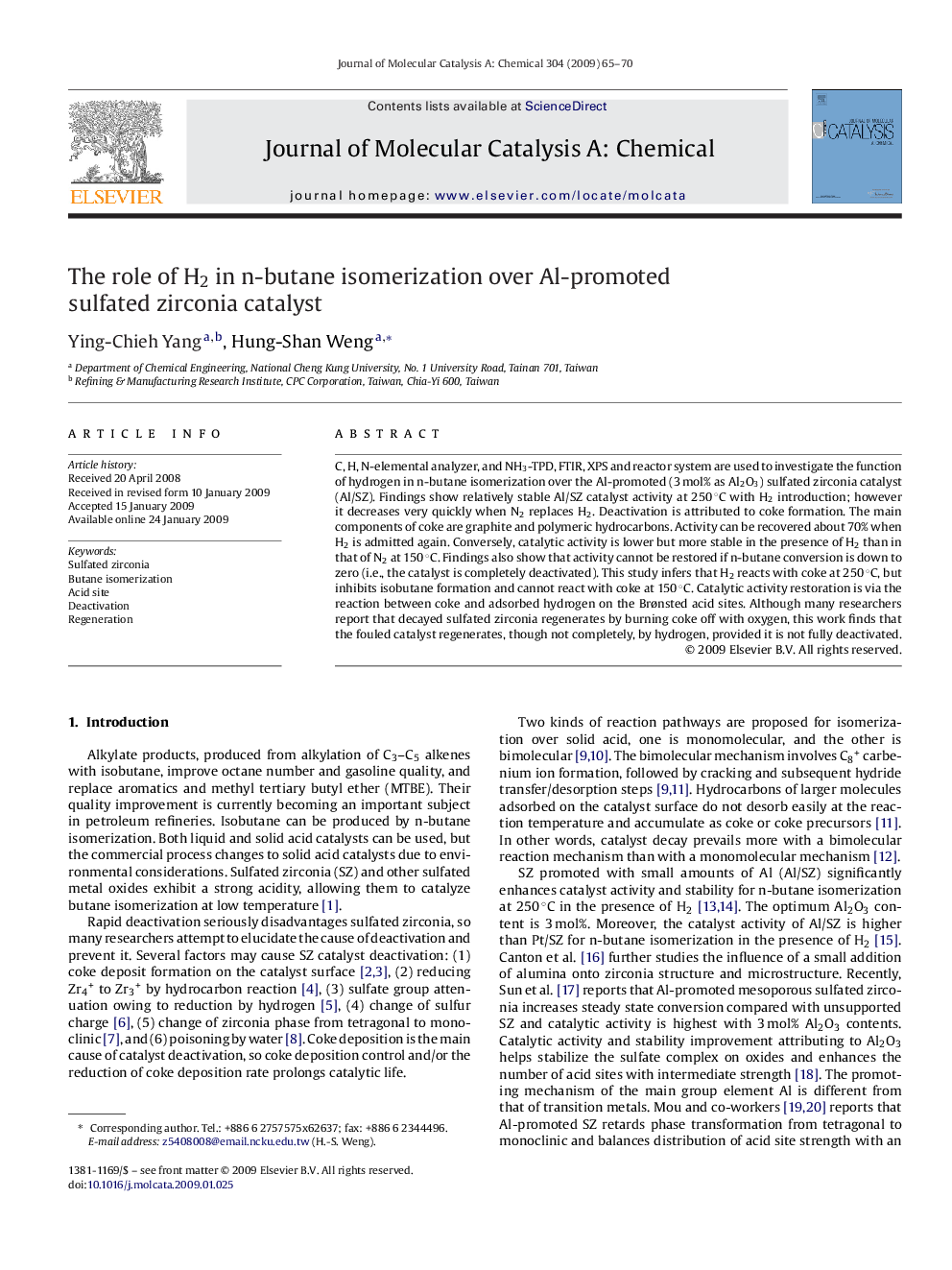| Article ID | Journal | Published Year | Pages | File Type |
|---|---|---|---|---|
| 67049 | Journal of Molecular Catalysis A: Chemical | 2009 | 6 Pages |
C, H, N-elemental analyzer, and NH3-TPD, FTIR, XPS and reactor system are used to investigate the function of hydrogen in n-butane isomerization over the Al-promoted (3 mol% as Al2O3) sulfated zirconia catalyst (Al/SZ). Findings show relatively stable Al/SZ catalyst activity at 250 °C with H2 introduction; however it decreases very quickly when N2 replaces H2. Deactivation is attributed to coke formation. The main components of coke are graphite and polymeric hydrocarbons. Activity can be recovered about 70% when H2 is admitted again. Conversely, catalytic activity is lower but more stable in the presence of H2 than in that of N2 at 150 °C. Findings also show that activity cannot be restored if n-butane conversion is down to zero (i.e., the catalyst is completely deactivated). This study infers that H2 reacts with coke at 250 °C, but inhibits isobutane formation and cannot react with coke at 150 °C. Catalytic activity restoration is via the reaction between coke and adsorbed hydrogen on the Brønsted acid sites. Although many researchers report that decayed sulfated zirconia regenerates by burning coke off with oxygen, this work finds that the fouled catalyst regenerates, though not completely, by hydrogen, provided it is not fully deactivated.
Graphical abstractFindings show relatively stable catalytic activity of the Al/SZ catalyst at 250 °C when hydrogen is present because of hydrogen reaction with coke. In addition, the fouled catalyst regenerates by hydrogen provided the catalyst is not fully deactivated. Hydrogen adsorption reaction on Brønsted acid sites with deposited coke precedes regeneration.Figure optionsDownload full-size imageDownload as PowerPoint slide
